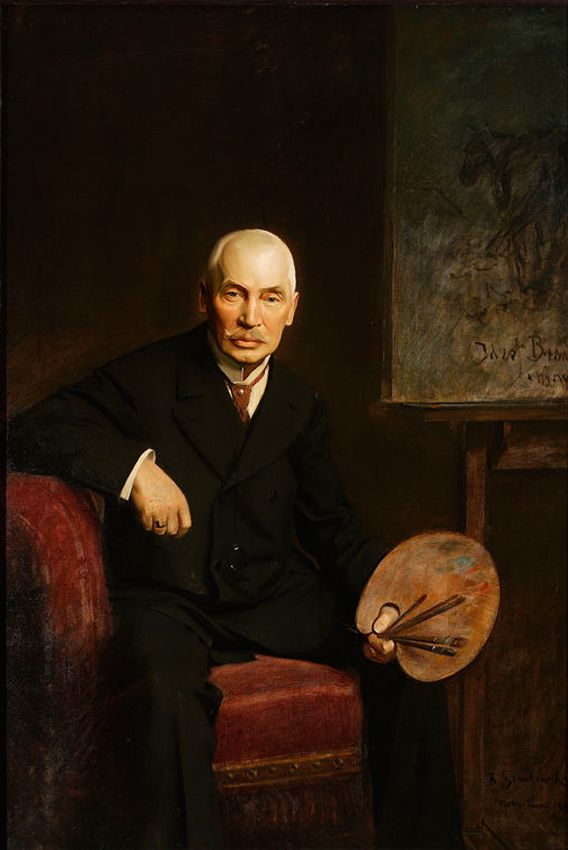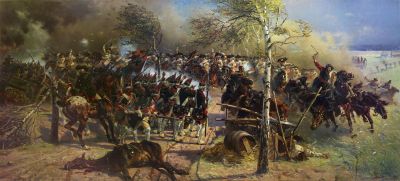Józef Brandt
Mediathek Sorted
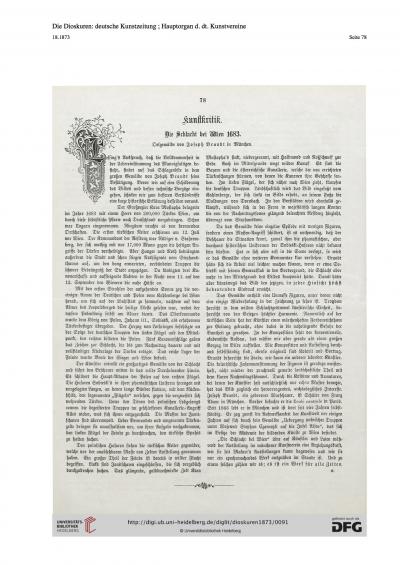
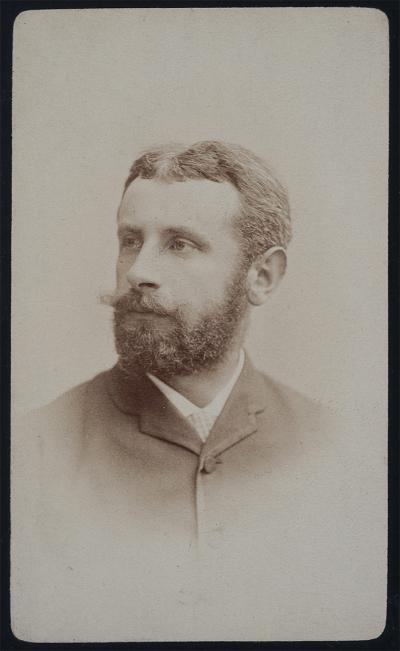
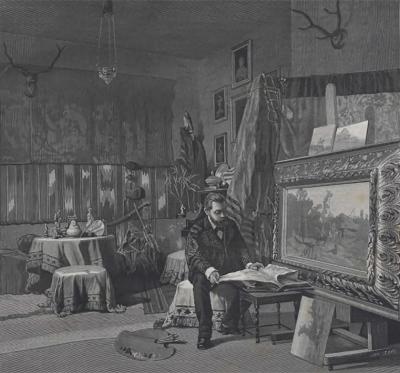
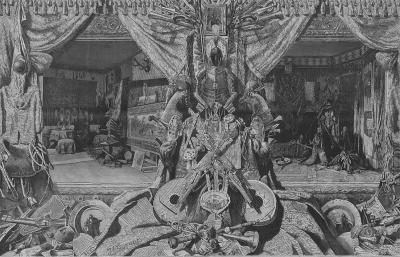
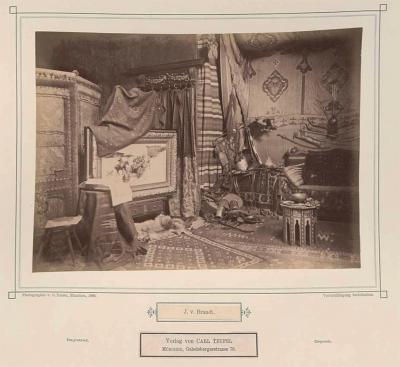
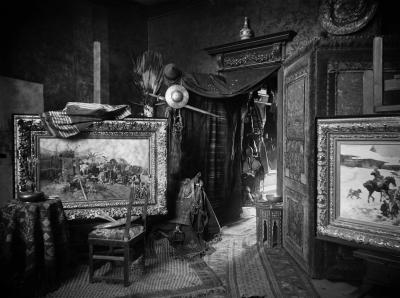
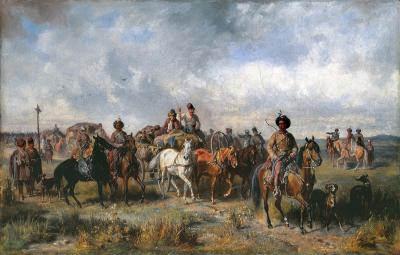

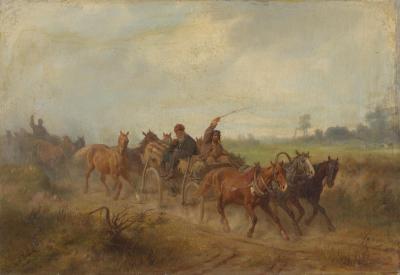
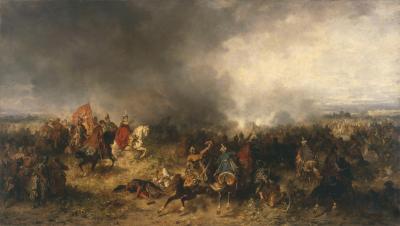
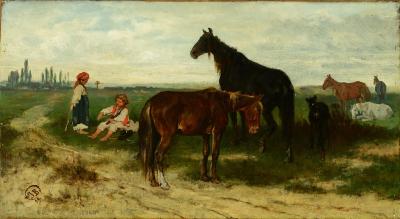
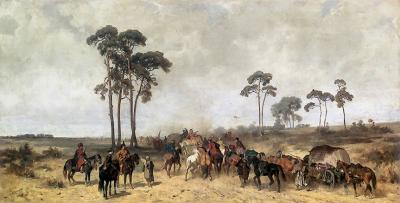
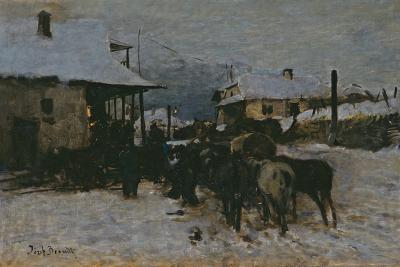
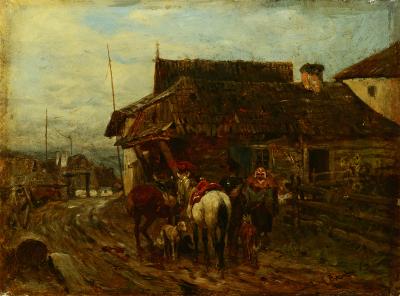
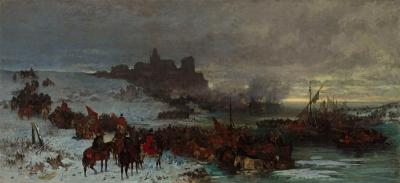
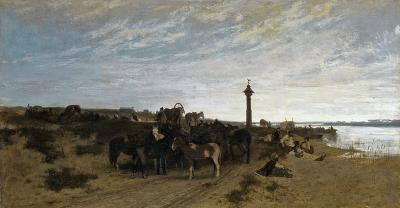
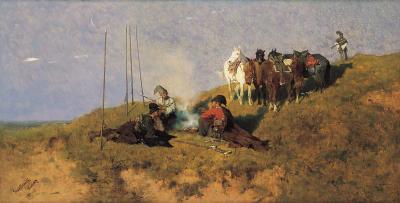
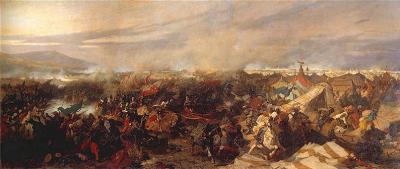
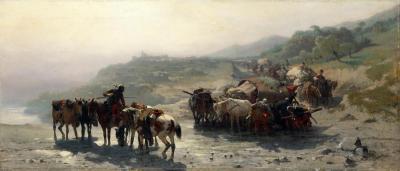
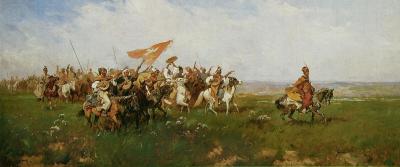

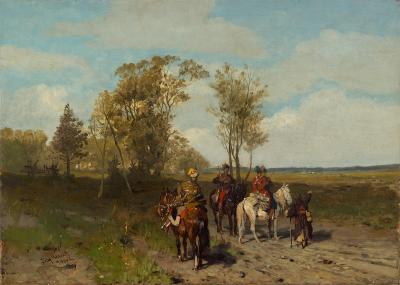
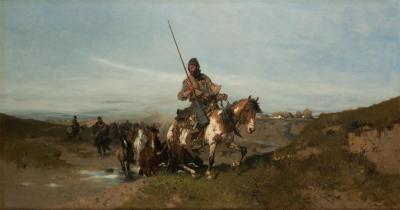
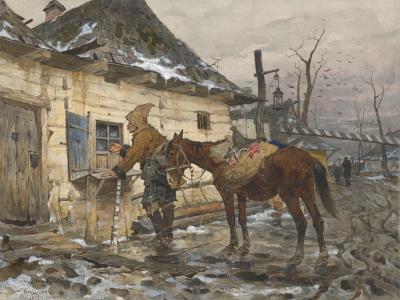
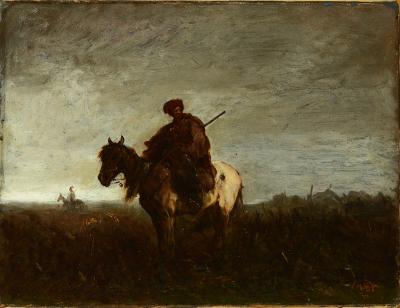
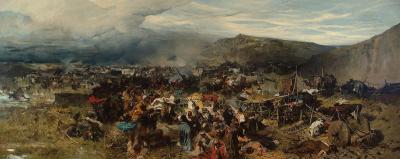
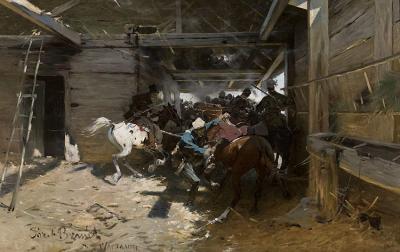
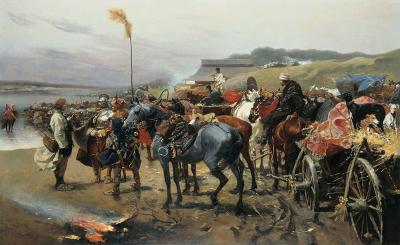
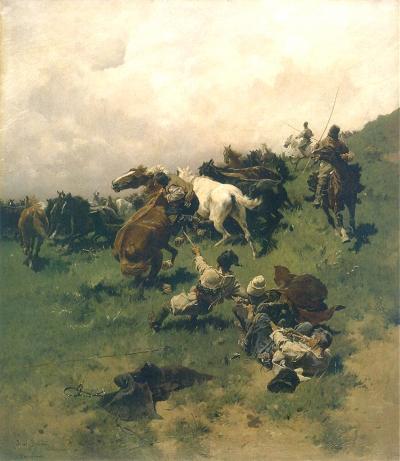
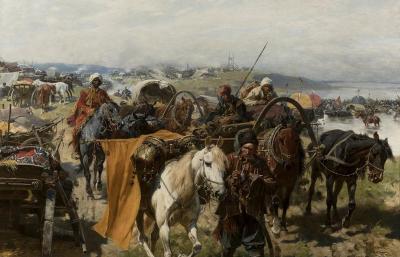
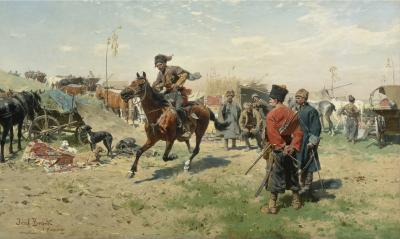
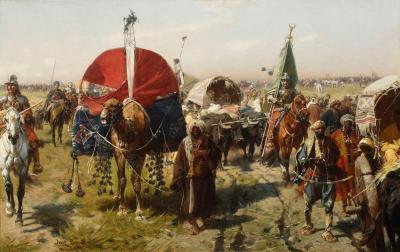

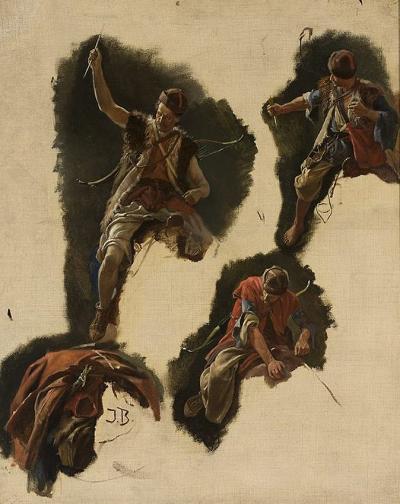
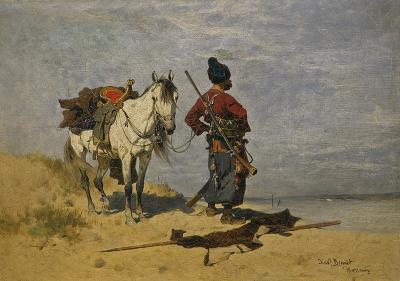
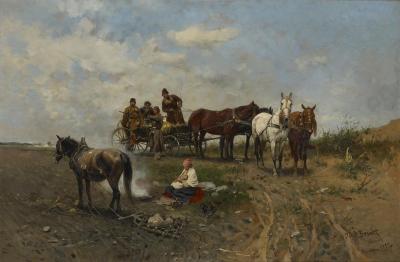
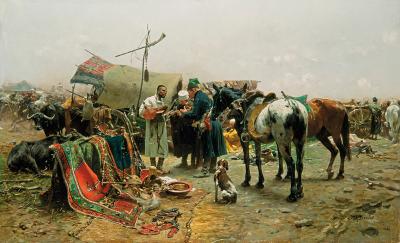
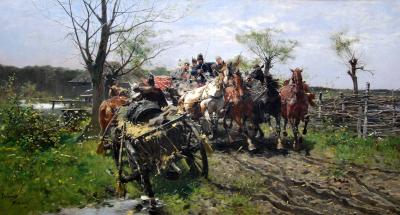

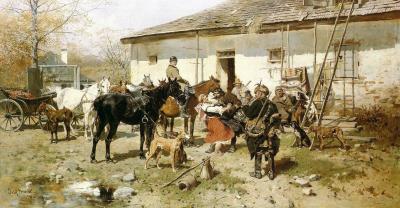
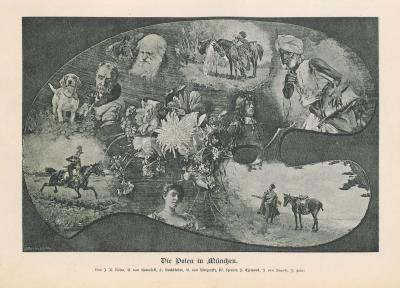
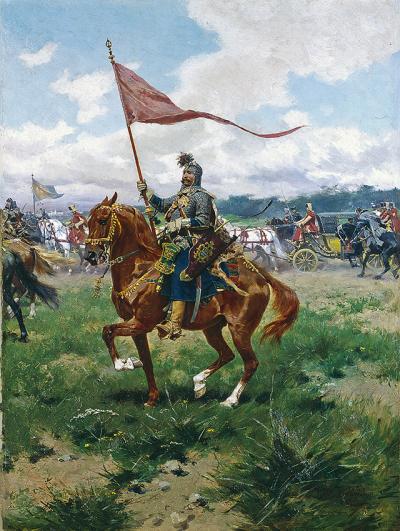
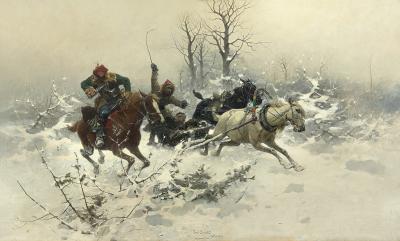
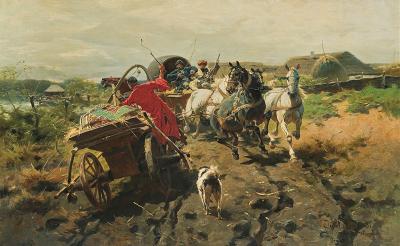
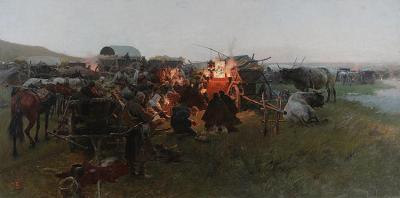
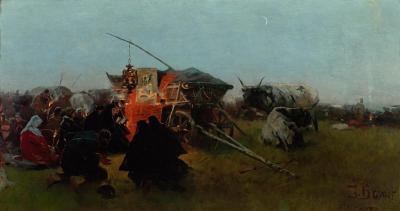
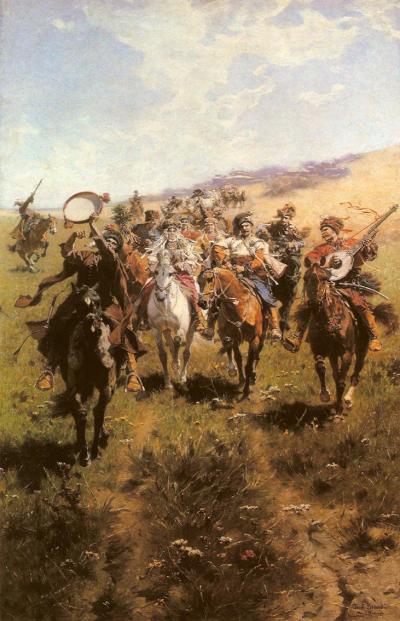
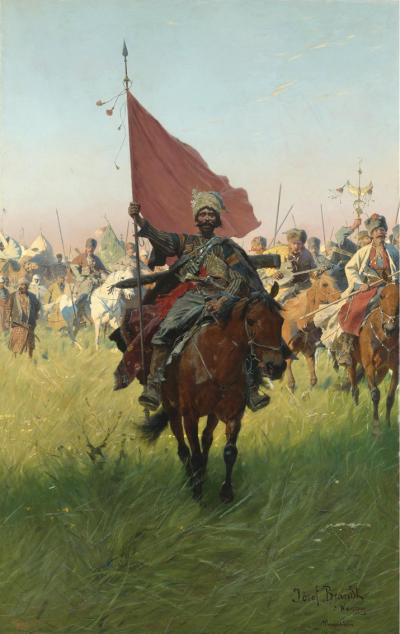
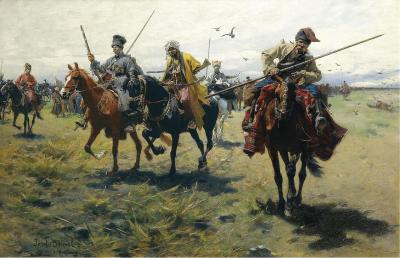
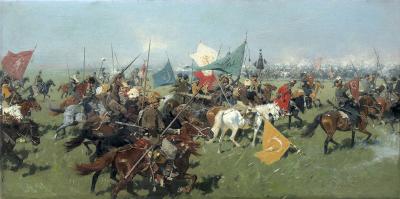

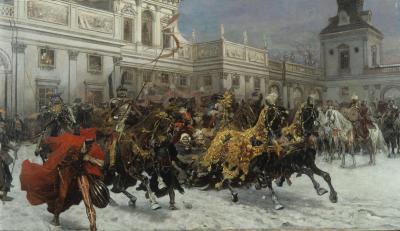
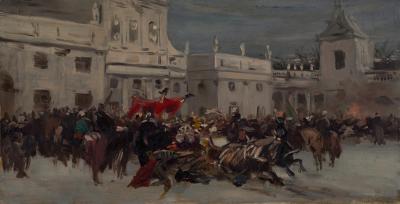

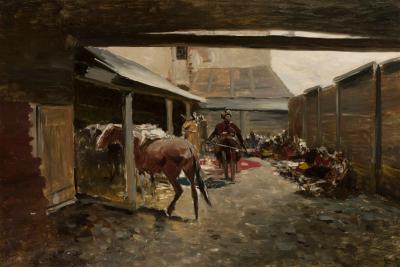
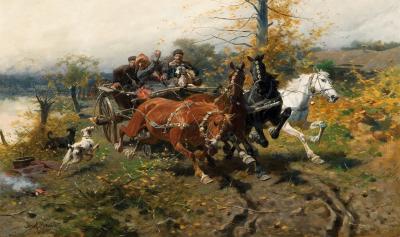
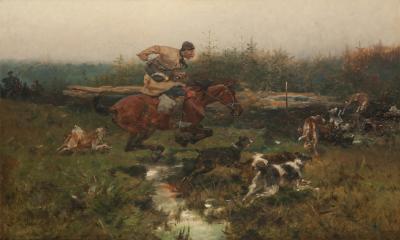
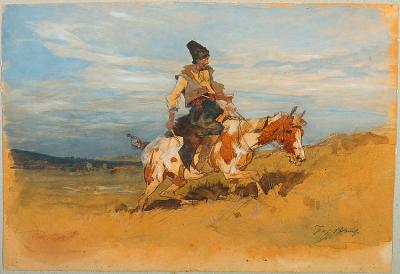
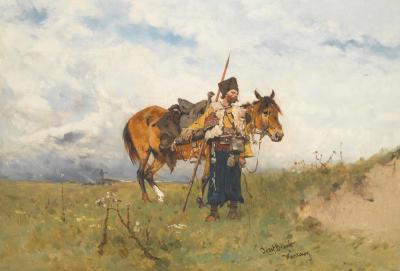
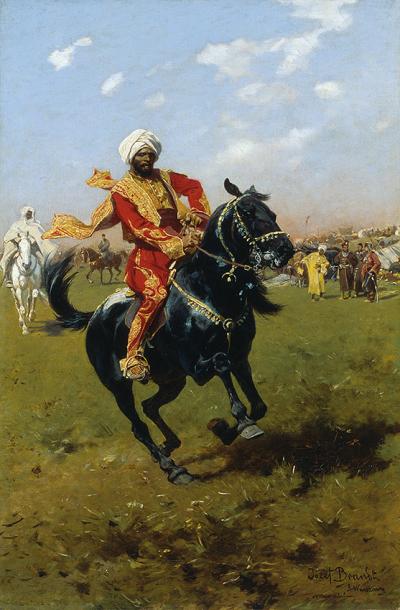
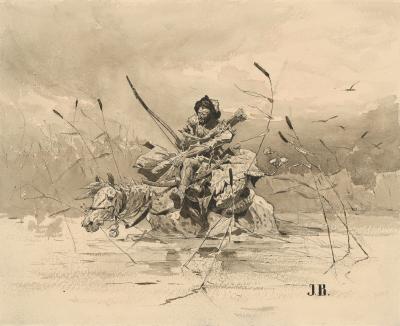
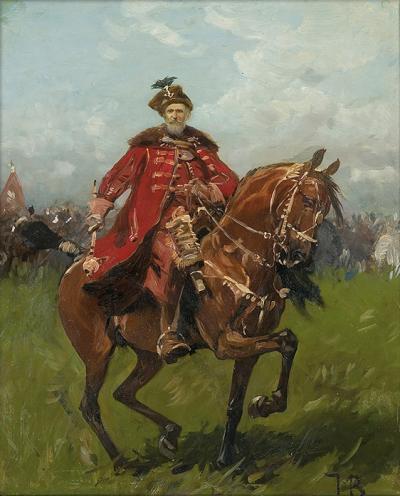
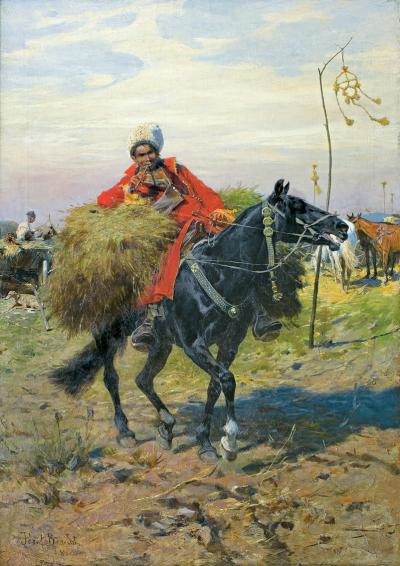
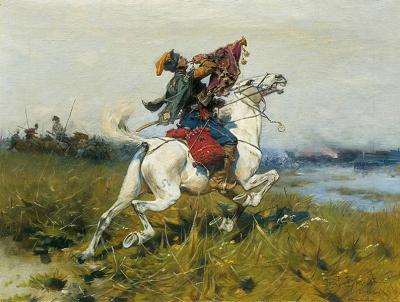
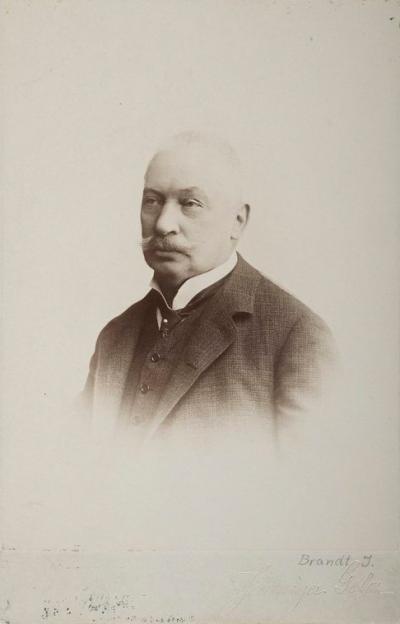

Over the years the following artists were a part of Brandt's inner circle of acquaintances: Ludomir Benedyktowicz, Olga Boznańska, Szymon Buchbinder, Franciszek Ejsmond, Julian Fałat, die Brüder Gierymski, Bohdan Kleczyński, Ludwik Kurella, Władysław Malecki, Jan Rosen, Stanisław Szembek etc.etc. Under his influence some of them, like Maksymilian Gierymski, Roubaud and Wierusz-Kowalski were also inspired by Polish folk culture and history. They spent a lot of time together, discussing art, singing to the accompaniment of a piano, celebrating parties and going to cafés with Adam. From time to time (like Brandt from 1874 onwards, alone or in the company of Wierusz-Kowalski, Rosen and Władysław Czachórski), they were also invited to dine with Luitpold of Bavaria and the Royal Family.[54] Artists even lived in the same streets: Maksymilian Gierymski, Benedyktowicz, Wierusz-Kowalski and Kossak like Brandt in Schillerstrasse, Landwehr and Schwanthalerstrasse; others like Fałat and Lucjan Kochanowski in the neighbouring Maxvorstadt and Schwabing.[55] Anton Braith (1836-1905) and Christian Mali (1832-1906) were also closely associated with this circle. Mali's studio was located at 46 Landwehrstrasse, and his legacy contained small-format paintings by Brandt, Maksymilian Gierymski and Czachórski, possibly as reciprocal gifts.[56]
From the outside, too, this group would soon be perceived as a closed "school". In 1888 Pecht wrote the following in his "History of Munich Art in the Nineteenth Century":"Thus the Poles, who were fundamentally different from all other artists, but who shared certain common characteristics closely related to their national character, soon made up a very special category. They were increasingly present in Munich to such an extent that they finally made up a formal “school.”[57] The year before, the Munich magazine “Kunst für Alle” had published an illustration of a palette painted by Polish artists, in which Brandt immortalized himself with a Cossack resting in the steppe. It was also signed "Józef Brandt z Warszawy"[58] (fig. 40) Works by six Polish artists were also found in the collection belonging to Prince Regent Luitpold after his death in 1912: Brandt, Chełmiński, Czachórski, Gorstkin-Wywiórski, Stanisław Grocholski and Wierusz-Kowalski.[59]
[54] Ptaszyńska 2008 (see note 32), page XIII. cf. also Adalbert von Kossak: Erinnerungen, Berlin 1913, page 41
[55] Ptaszyńska 2008 (see note 32), page XI
[56] The six oil paintings are in the legacy of Braith and Mali in the Museum Biberach, Braith-Mali-Museum, Biberach an der Riß; by Brandt see fig. 10, 13, 24. Cf. Irena Olchowska-Schmidt: Bilder polnischer Maler im Biberacher Museum, in: BC-Heimatkundliche Blätter für den Kreis Biberach, 13. Jahrgang, Heft 1, 22. June 1990; Digital version: http://www.gfh-biberach.de/publication/bc-heimatkundliche-blaetter-13-jahrgang-heft-1-22-juni-1990/ (called up on 25.11.2017)
[57] Pecht 1888 (see further reading), page 420
[58] The report in the magazine read as follows:”Some of the more outstanding members of colony of the many Polish artists living here in Munich, have gathered to immortalise themselves with gracious jests on a palette, which we illustrate here. From the overall harmony it is easy to see how these artists make up a common school, though it must be said that their character has been stamped by the genius of J. von Brandt, who has more or less influenced the others.” Die Kunst für alle. Malerei, Plastik, Graphik, Architektur, vol. 3, München 1887/88, page 62, illustration after page 60; Digital version: http://digi.ub.uni-heidelberg.de/diglit/kfa1887_1888/0089 (called up on 22.11.2017)
[59] Ptaszyńska 2008 (see note 32), page XIII





















































































